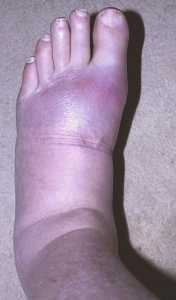MedicalResearch.com Interview with:
David C. Brodner, M.D.
Founder and Principle Physician, The Center for Sinus, Allergy, and Sleep Wellness
Double Board-Certified in Otolaryngology (Head and Neck Surgery) and Sleep Medicine
Assistant Clinical Professor, Florida Atlantic University College of Medicine
Medical Director, Good Samaritan Hospital Sleep Laboratory
Senior Medical Advisor, Physician’s Seal, LLC®
MedicalResearch.com: What is the background for this study?
Response: Melatonin is produced by the pineal gland in the brain and is the body’s natural sleep ingredient. Melatonin levels normally begin to rise in the mid-to late evening and remain high for the majority of the night. Levels begin to decline towards early morning, as the body’s wake cycle is triggered. Research shows that as people age, melatonin levels can drop by as much as 70 percent and their bodies may no longer produce enough melatonin to ensure adequate sleep.
Other available products, such as immediate-release melatonin, help initiate the onset of sleep but are usually unable to sustain prolonged sleep maintenance due to an immediate burst of melatonin, which is quickly degraded due to its relatively short half-life (60 minutes). Absorption in the lower digestive tract is limited by melatonin’s limited ability to be absorbed in a low acidity or neutral pH environment.
This post-marketing
REMfresh
® Patient Reported Outcomes
DURation (REMDUR) study was designed to obtain real-world evidence about patients’ sleep patterns, duration of sleep before and after REMfresh
® (CRA-melatonin
™), daily REMfresh
® (CRA-melatonin
™) use, onset of action, sleep maintenance, quality of sleep, and overall satisfaction with REMfresh
® (CRA-melatonin
™). Patients with sleep disturbances in the general population who received a sample of CRA-melatonin
™ (REMfresh
®) from their physicians were invited to complete a 12-question survey. Survey responses were received from 500 patients.
(more…)
















